CalPortland
TruckTrax enterprise application
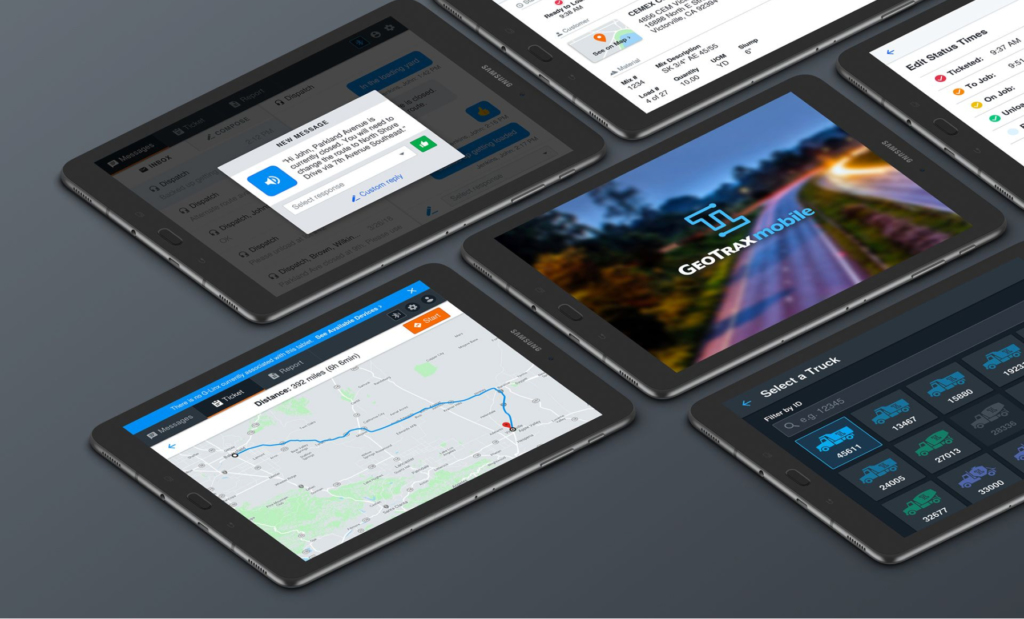
An enterprise platform for optimized construction operations
Background
TruckTrax, a subsidiary of CalPortland, is a Seattle-based software company that provides solutions for construction materials delivery. One key solution is ensuring that large-scale construction materials (aggregate, cement, concrete) get to the right locations in a timely fashion. TruckTrax came to us to help them establish software development leadership, implement an agile process, and build a team to rebuild their entire software system.
Challenges
- Integrating with legacy software and leveraging the existing infrastructure to write new code
- Prioritizing UX and usability for a non-technical user base
- Streamlining the UI to help users prioritize essential tasks
- Modernizing the brand to highlight TruckTrax’s sophistication
- Optimizing the database for massive amounts of inbound data from sensors that truck concrete drum speed, temperature, and much more
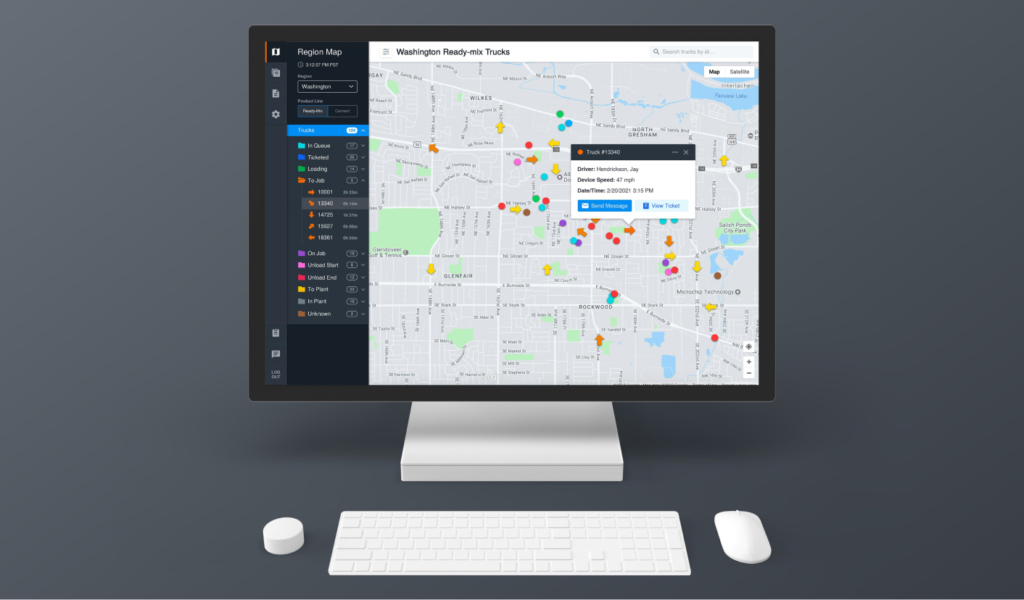
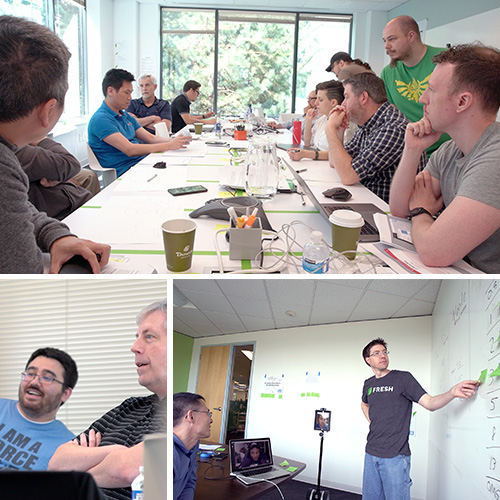
Aligning the team
Fresh strategists spent time gaining a baseline understanding of TruckTrax’s existing processes and workflows. Then, we led a workshop with TruckTrax stakeholders and developers to outline an agile, iterative development roadmap for the product.
The output was a two-year plan. Our team would be responsible for designing and developing the enterprise platform. The next phase would involve teaching the TruckTrax team to maintain and refine the platform in light of ongoing organizational shifts and the evolution of their customer base.
TruckTrax has been an exceptional collaborator. Our ability to create value was accelerated by their desire to collaborate, align workflows, and define the ideal end product in tandem.
Comprehensive design
Our output from the design front included dozens of touchpoints extending across the entire app.
Unified branding: Usability for a blue-collar workforce was the primary goal, but we also sought to create a high-fidelity, market-ready product. Brand strategy was essential. Leveraging the elements TruckTrax already had, we defined a cohesive visual style and created an easy-to-deploy design language system.
Visual accessibility: Users are differently abled, and inclusivity is vital. Additionally, the app would be used on the road, at night, and in other non-ideal settings. We conducted color and vision impairment studies to ensure that drivers could operate safely on the road. The output was accessible colors, clean iconography, and easy-to-memorize UI patterns.
Adaptive mobile UX: The app is designed for worksites and on the road. Safety was a primary focus. We created the app to limit actions at certain speeds and lock features as needed. We also followed the principle of progressive disclosure, prioritizing simplicity for smaller screens and non-power users.
Touch-screen optimization: Drivers, operators, and construction site workers wear gloves, use multiple tools, have differently-sized hands, and much more. The app isn’t designed for use in ideal environments, so ruggedization—with clear touch targets on the UI—was essential.
Training and onboarding: We made design onboarding seamless with extensive Wiki documentation. Our goal was to create instructions for maintaining a connected, productive workflow for every designer involved.
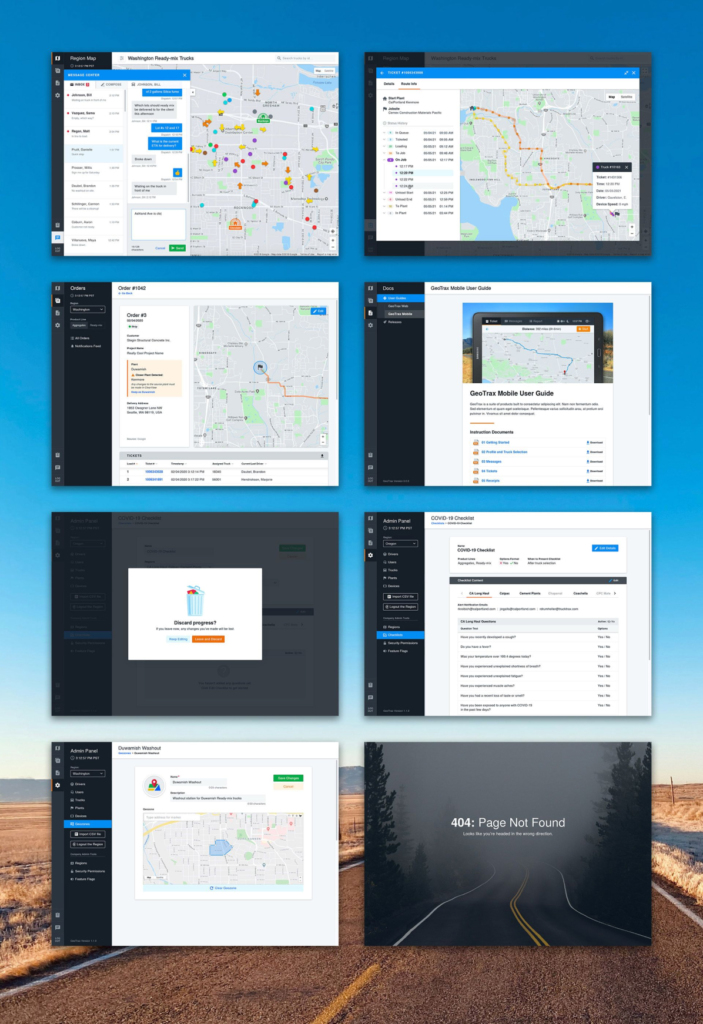
End-to-end development: Parity Plus
Our development team’s objective was to take the technology TruckTrax had in place and optimize it. Doing so required development work extending across multiple disciplines.
A scalable and extensible platform: The client anticipated company growth and evolving user needs. Positioning the TruckTrax team to maintain and update the platform required scalable technology architecture and a team that understood DevOps principles and best practices.
Integrating new features with the legacy system: TruckTrax had outgrown its legacy system, but there were parts of it that were essential to keep intact. A vital component of the existing workflow was generating and assigning work tickets. It was essential to leave the backend data and records unaltered, so we created an optimized “sidecar” to send messages to the GeoTrax app when the system was triggered.
Building a robust microservices architecture: To ensure that the TruckTrax system ran smoothly and was scalable for future improvements, it was essential to have multiple web APIs. We created a microservices “boilerplate” to standardize the process of bringing new microservices into the system, get them up and running, and onboard additional developers. The system has twenty-seven different services, which are essential components of its architecture.
Automated development testing: Given the size and complexity of the platform, ongoing, automated testing was vital. End-to-end testing, CI/CD (continuous integration and continuous deployment), and unit testing were key focuses. Due to strategic planning from the outset, we delivered a test plan that matched our agile development workflow.
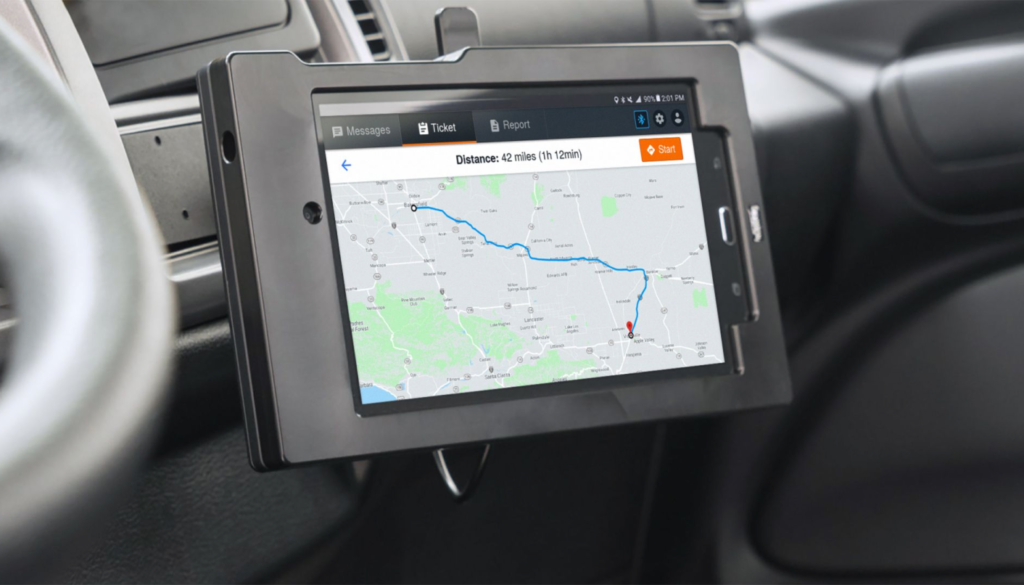
The final outputs
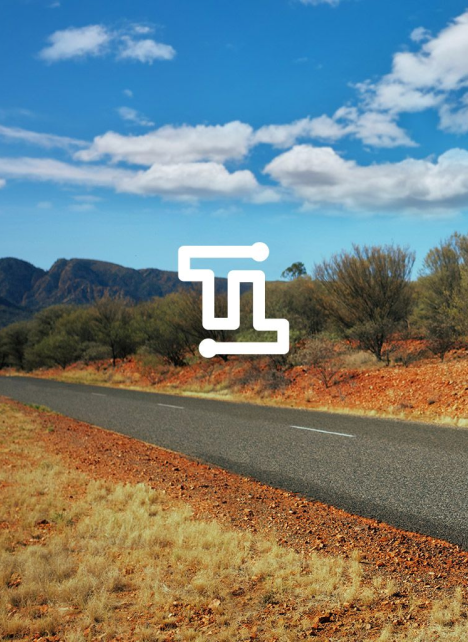
Automated development testing
Leveraging the TruckTrax team’s knowledge about their industry and company vision, we helped build consensus for short and long-term platform improvements.
A Comprehensive Design Language System
Knowing that the TruckTrax team would continue maintaining the platform and iterating in the future, we equipped them with branded, easy-to-deploy design modules.
Optimized cloud infrastructure
Knowing that what TruckTrax had in place worked for their team in many ways, we took their existing infrastructure and improved it, modernizing it for the cloud and automating manual workflows.
“Fresh provides extremely high quality resources, but it is their leadership, collaboration, and culture that ensures success! They are part of our team, and always looking out for our best interests. It is a pleasure working with them.












